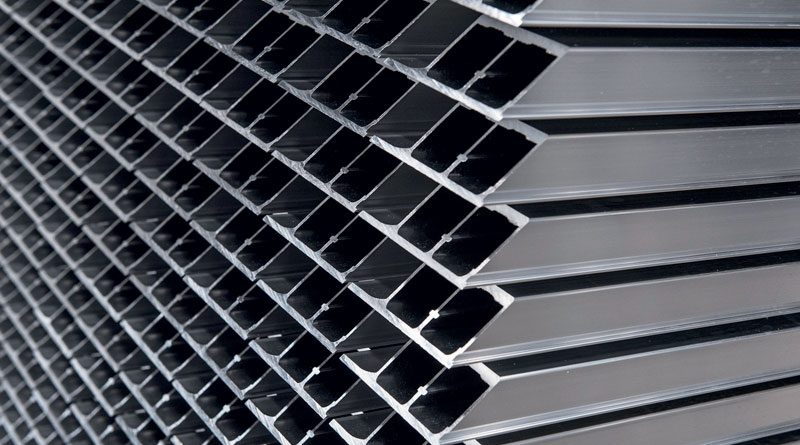Italian Semis production in 2020 Better Than Expected
Centro Studi Assomet indicates limited reductions in the production of aluminium semis compared to forecasts issued at the beginning of the health emergency in the first months of last year
The Italian aluminium sector and, more specifically, the semis sector recorded a consistent upswing starting from July 2020, which then consolidated in the last months of the year, leading to decreases of around 5%, much better than what was expected during the hard lockdown months. The general sentiment among market participants is currently positive, thanks to good order coverage and a total recovery in productivity, which was initially thought to be related to the accumulation of past orders, but which actually seems to be continuing, taking the form of a real recovery. The most pronounced decreases have affected production linked to the automotive sector and, to a lesser extent, to the building industry, which, however, in recent months has seen an increase in demand for semis due, above all, to the “110% Superbonus”, aimed at relaunching the construction sector. The trend is different for those companies whose production is destined for the packaging and pharmaceutical sectors, which have recorded positive values throughout the year, both because there has been no interruption in activity as they are linked to basic needs, and because of the drop in imports from China.
Extrusions and rolled products
According to data collected and processed by Assomet, the Italian production of aluminium semis in 2020 consolidated at 1,177,000 tons produced, with a negative variation of 4.4% compared to 2019. The extrusions sector recorded a decrease of 5.1% compared to 2019 values thanks to the strong recovery in the second half of the year, in spite of the forced shutdowns related to the health emergency and despite having started 2020 with widespread uncertainty among operators, recovering from a 2019 already in decline. National production of extrusions thus amounts to 566,300 tons (597,000 in 2019). Apparent consumption of extruded products in Italy amounts to about 415,000 tons, -2.6% compared to the values of the previous year. The decrease is more limited because exports have recorded a more marked decline with respect to imports, due to the difficulties of the historical moment we are experiencing for trade. Imports of extruded products should settle at about 72 thousand tons (at the moment Istat data are available until November 2020), with a reduction of about 4%, while exports should exceed 220 thousand tons (-9%), highlighting the importance of foreign markets for this sector. As regards the production of aluminium rolled products, the decrease did not exceed 4.3%, mainly due to the difficulties experienced by the transport sector, while packaging and pharmaceuticals, as already described, continued to drive the sector even during the most critical months of the pandemic. National production amounted to 583,100 tons. In this case the reductions are more marked for both imported and exported quantities, which are expected to amount to 285 thousand tons (-13%) and 305 thousand tons (-14%) respectively. The resulting apparent consumption thus shows a decrease of 3%, with 565 thousand tons of rolled products used in Italy.
Foundry alloys
Another fundamental sector of the Italian aluminium market, that of foundry alloys, contrary to semi-finished products, has not recovered the strong reductions recorded in the lockdown months: national production stands at 570,300 tonnes, down 18%. However, national consumption shows a heavier reduction, around 27%, as a substantial quantity of ingots was exported: exports increased by around 8-10% compared to 2019 (around 290 thousand tons). Imports, on the other hand, recorded a decrease of 19%, with about 160 thousand tons. Aluminium prices experienced two very different periods in 2020, influenced by the evolution of the health emergency. From the beginning of the year until the height of the pandemic, prices on the London Metal Exchange (LME) recorded declining quotations, collapsing to $1,421 (the lowest level in over four years) in April. Then, in the second half of the year, thanks mainly to reopenings and the unexpected economic boom in China, aluminium reversed its course, reaching its highest point of $2,051 in December. At the end of 2020, premiums were also significantly higher in the US, Europe and Asia, with strong demand and shortages of scrap metal outside China supporting a further increase in demand for the metal. Demand for base metals in China increased as a result of significant government investment to stimulate the economy, particularly aimed at real estate and infrastructure. This has led to strong increases in imports, from bauxite (+14%), to alumina (+205%), but also alloy bars and secondary aluminium ingots: imports have increased from 219,000 tons in 2019 to over one million tons in the first 10 months of 2020. Italy alone exported around 70,000 tons of alloy breads to China in the January-November 2020 period, compared to a value of 4,000 tons exported in the same period of 2019, highlighting the Asian giant’s strong demand for the metal. In contrast, scrap imports fell, mainly due to new rules governing the entry of scrap and waste into China. The same trend is appearing in this first half of 2021, with LME quotations of aluminium alloys continually overtaking High Grade quotations, both of which have been steadily above $2,000 since mid-February.

